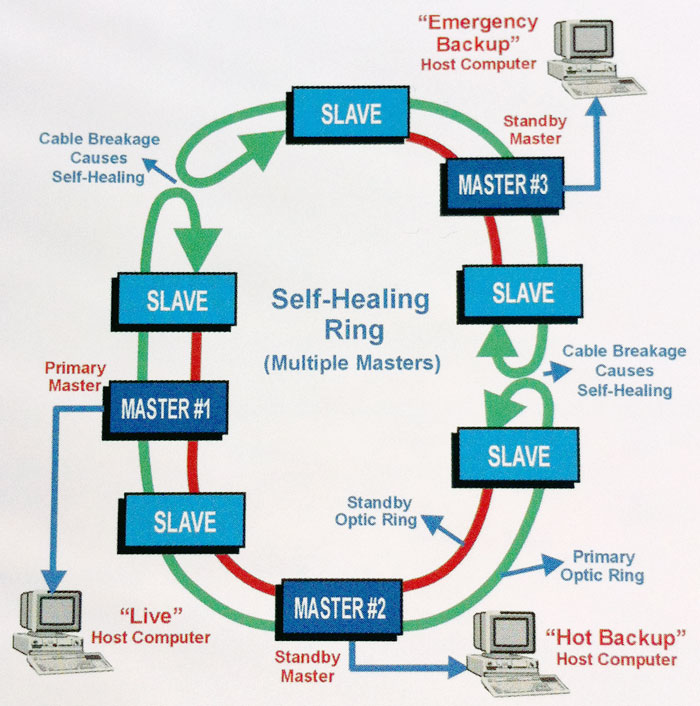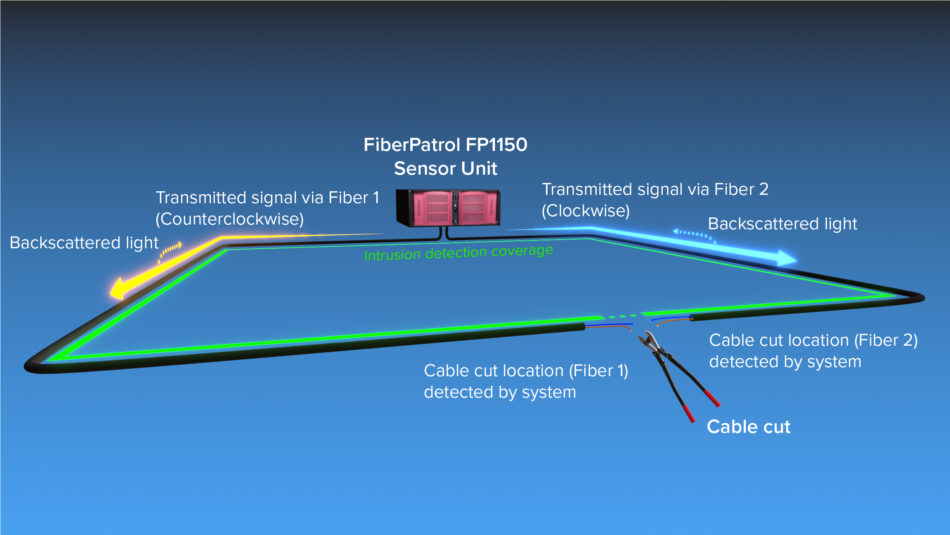Security Fibers: A Reliable Solution for Cutting-Edge Security Systems
Wiki Article
Improve Your Security With Advanced Fiber Optic Security Solutions
In an era where safety is paramount, sophisticated fiber optic security systems present a compelling remedy for improving security throughout various settings. What effects do these innovations hold for future safety and security measures?Advantages of Fiber Optic Safety
Utilizing the advantages of fiber optic modern technology dramatically enhances safety and security systems throughout various applications. Among the main benefits is the increased bandwidth capacity, enabling the transmission of huge quantities of data at broadband. This is particularly important for real-time video security, where high-resolution feeds can be sent out without latency, ensuring prompt action capacities.Additionally, optical fiber display superior resistance to electro-magnetic interference, which is crucial in settings with prospective signal interruptions. This integrity guarantees consistent performance in vital safety procedures. Fiber optic cords are less susceptible to touching and unauthorized gain access to contrasted to typical copper circuitry, thereby boosting data integrity and confidentiality.
An additional noteworthy benefit is the longevity of fiber optic systems; they are more immune to environmental variables such as wetness, temperature level changes, and destructive substances. This resilience converts to reduce maintenance expenses and longer life-spans for safety and security installments.
Last but not least, the light-weight nature of fiber optic cables facilitates simpler setup and directing, specifically in intricate infrastructures (fiber optic security system). Eventually, the integration of fiber optic modern technology right into safety and security systems not just boosts defense procedures yet likewise optimizes operational performance
Secret Attributes to Consider
When reviewing fiber optic safety systems, numerous vital functions must be taken into consideration to ensure optimum efficiency and performance. Initially, evaluate the system's discovery variety and level of sensitivity; a substantial range permits keeping an eye on large locations, while high level of sensitivity makes certain that also minor disruptions are identified immediately.Next, take into consideration the integration capabilities of the system. A fiber optic security system must effortlessly user interface with existing protection measures such as cams and alarms, developing a natural protection network.
Toughness and environmental resistance are also critical attributes. Ensure that the system is developed to endure severe weather condition conditions and possible physical threats, as this will certainly prolong its operational life-span.

Last but not least, check out the scalability of the system. A robust fiber optic protection system need to be quickly expandable to suit future demands without significant overhauls. By very carefully considering these attributes, you can pick a fiber optic safety service that enhances security and safety in your environment.
Setup Refine Overview
To successfully apply a fiber optic safety and security system, an organized setup procedure is essential. This process starts with a detailed site assessment to figure out the details safety demands and to identify optimal areas for fiber optic cords and safety and security devices. Following this evaluation, the installment team will establish a thorough plan, including cord pathways, required devices, and conformity with neighborhood guidelines.Next, the installation involves laying the fiber optic cables, guaranteeing they are protected from ecological factors and physical damage. Proper handling techniques are essential, as fiber optic cables are delicate and can be quickly harmed. After the cabling is installed, adapters and terminations are diligently finished to ensure signal integrity.
The succeeding phase is composed of installing protection tools such as cams, movement detectors, and security system, all incorporated with the fiber optic network. Extensive testing is performed to confirm that all parts are working properly and to make sure ideal efficiency.

Comparing Fiber Optic to Traditional Systems
The evolution of protection innovation has resulted in considerable innovations in the comparison between fiber go to website optic systems and conventional copper-based systems. Fiber optic systems use light to transfer data, providing premium transmission capacity and speed compared to their copper equivalents. This leads to improved data transmission capabilities, making optical fiber perfect for high-resolution video monitoring and real-time surveillance.In addition, fiber optic wires are resistant to electro-magnetic interference, minimizing the likelihood of signal deterioration triggered by external factors. This characteristic ensures constant efficiency, even in challenging settings. In comparison, conventional copper systems are more vulnerable to interference, causing possible vulnerabilities in security applications.
Toughness is one more advantage of fiber optic systems. They are less vulnerable to damage from environmental aspects such as wetness and temperature level variations, which can jeopardize copper wiring. Moreover, optical fiber are lighter and thinner, enabling less complicated installment and decreased physical footprint.
Nonetheless, standard systems have a tendency to have lower preliminary costs, making them attractive for budget-conscious jobs. While fiber optic systems may need a higher in advance financial investment, their lasting advantages-- such as reduced upkeep costs and better integrity-- often surpass the initial expenditure, placing them as a superior selection for modern-day safety needs.
Future Patterns in Protection Innovation
Emerging fads in protection technology are positioned to change the landscape of monitoring and threat detection - fiber optic security system. As organizations significantly face sophisticated hazards, technologies such as synthetic intelligence (AI) and maker discovering (ML) are coming to be indispensable to security systems. These get more technologies enhance the ability of fiber optic systems by allowing real-time information analysis, recognizing abnormalities, and automating responses to potential violationsbrowse around this site In addition, the integration of the Web of Points (IoT) is transforming security structures. IoT tools can provide thorough situational recognition and facilitate smooth communication in between various security parts. This interconnectedness permits more effective tracking and faster case action times.
Biometric verification is likewise gaining energy, providing a higher degree of security via one-of-a-kind physical characteristics. As this technology progresses, it is likely to be included into fiber optic systems for enhanced access control.
Conclusion
In final thought, advanced fiber optic protection systems represent a substantial development in security and surveillance modern technology. The change from conventional systems to fiber optic solutions reflects a growing trend towards much more reliable and reliable security measures in an increasingly intricate technical landscape.Report this wiki page